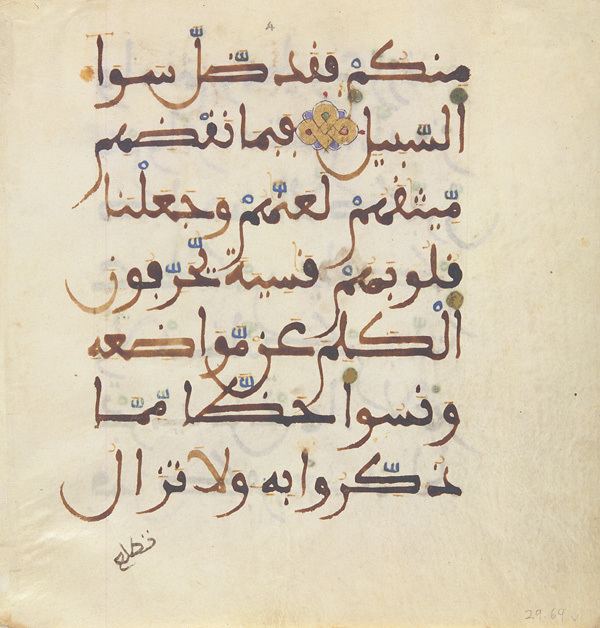Phonemic representation q (kˤ, g) Numerical value 100 | Position in alphabet 19 | |
 | ||
Qoph or Qop (Phoenician Qōp ) is the nineteenth letter of the Semitic abjads. Aramaic Qop is derived from the Phoenician letter, and derivations from Aramaic include Hebrew Qof ק, Syriac Qōp̄ ܩ and Arabic Qāf ق.
Contents
Its original sound value was a West Semitic emphatic stop, presumably [kˤ] or [q]. In Hebrew gematria, it has the numerical value of 100.
Origins
The origin of the glyph shape of qōp () is uncertain. It is usually suggested to have originally depicted either a sewing needle, specifically the eye of a needle (the Hebrew קוף means "hole"), or the back of a head and neck (qāf in Arabic meant "nape"). According to an older suggestion, it may also have been a picture of a monkey and its tail.
Besides Aramaic Qop, which gave rise to the letter in the Semitic abjads used in classical antiquity, Phoenician qōp is also the origin of the Latin letter Q and Greek Ϙ (qoppa) and Φ (phi).
Arabic qāf
The Arabic letter ق is named قاف qāf. It is written is several ways depending in its position in the word:
It is usually transliterated into Latin script as q, though some scholarly works use ḳ.
Pronunciation
According to Sibawayh, author of the first book on Arabic grammar, the letter is pronounced as a voiced phoneme. As noted above, Modern Standard Arabic has the voiceless uvular plosive /q/ as its standard pronunciation of the letter, but dialectical pronunciations vary as follows:
Note, however, that most dialects of Arabic do use the sound [q] for this letter when it is found in learned words borrowed from standard Arabic into the respective dialect.
Maghrebi variant
The Maghrebi style of writing qāf is different: having only a single point (dot) above; when the letter is isolated or word-final, it may sometimes become unpointed.
The earliest Arabic manuscripts show qāf in several variants: pointed (above or below) or unpointed. Then the prevalent convention was having a point above for qāf and a point below for fāʼ; this practice is now only preserved in manuscripts from the Maghribi, with the exception of Libya and Algeria, where the Mashriqi form (two dots above: ق) prevails.
Within Maghribi texts, there is no possibility of confusing it with the letter fāʼ, as it is instead written with a dot underneath (ڢ) in the Maghribi script.
Hebrew Qof
The Oxford Hebrew-English Dictionary transliterates the letter Qoph (קוֹף) a transliteration as q or k; and, when word-final, it may be transliterated as ck. The English spellings of Biblical names (as derived from Latin via Biblical Greek) containing this letter may represent it as c or k, e.g. Cain for Hebrew Qayin, or Kenan for Qenan (Genesis 4:1, 5:9).
Pronunciation
In modern Israeli Hebrew the letter is also called kuf. The letter represents /k/; i.e., no distinction is made between Qof and Kaph.
However, many historical groups have made that distinction, with Qof being pronounced [q] by Iraqi Jews and other Mizrahim, or even as [ɡ] by Yemenite Jews under the influence of Yemeni Arabic.
Gematria
Qof in gematria represents the number 100. Sarah is described in Genesis Rabba as בת ק' כבת כ' שנה לחטא, literally "At Qof years of age, she was like Kaph years of age in sin", meaning that when she was 100 years old, she was as sinless as when she was 20.
